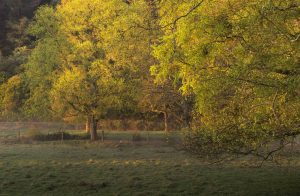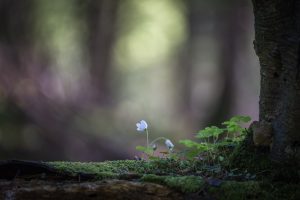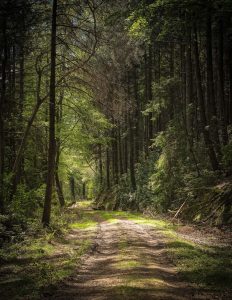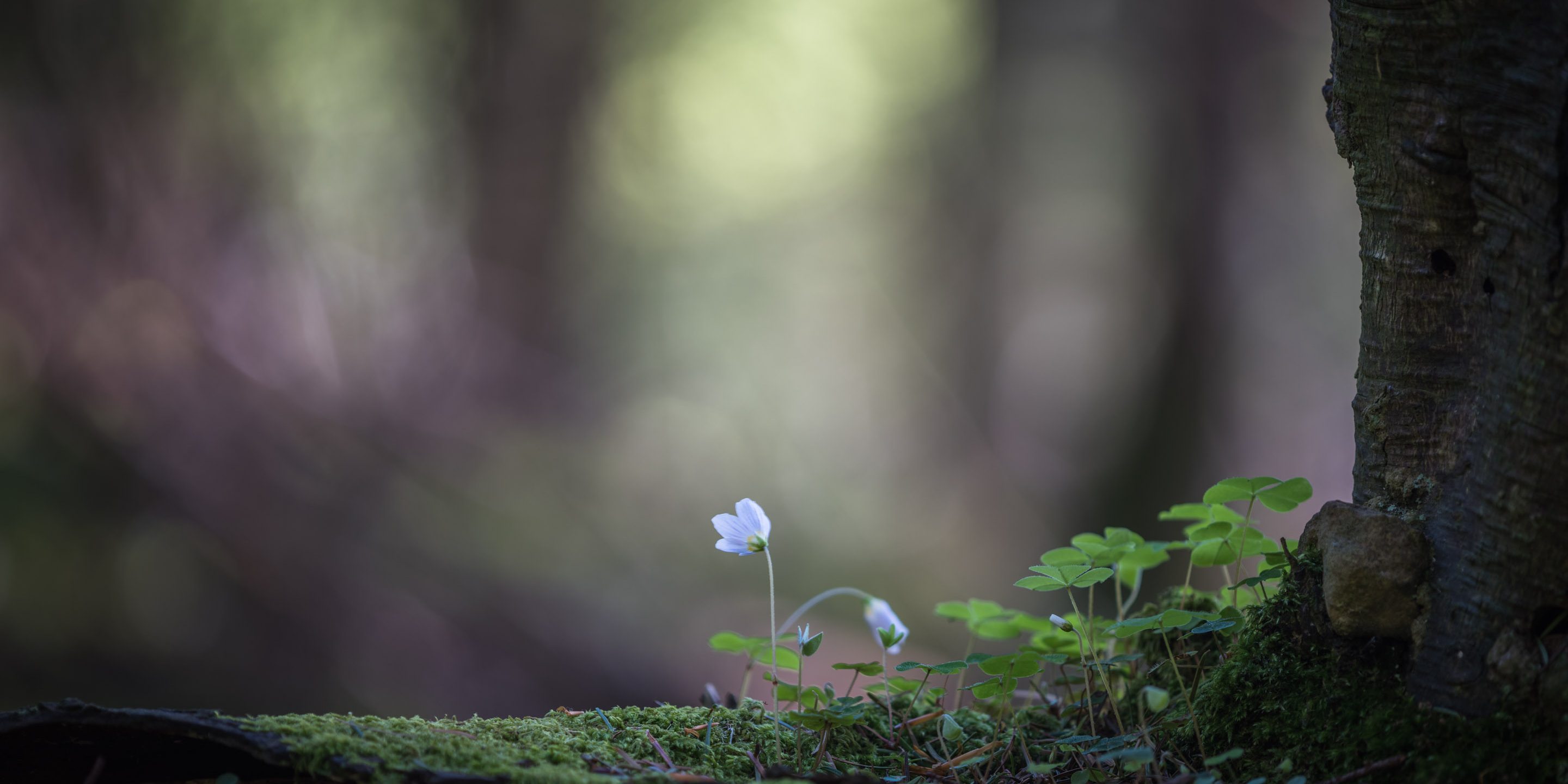Woodland Photography in Early Summer
Photographic opportunities in early summer woodlands are often overlooked. A window exists in the last week of April into the first weeks of May just before the “forty shades of green” summer lushness overwhelms all other colour.
Beech trees are the first to leaf just as they are the last to shed in late autumn. This fresh, bright green offers wonderful contrast against largely bare trees and particularly against the darks of coniferous trees in mixed woodland. Delicate wood sorrel thrive on moist moss covered woodland floor. Primroses grow in isolated clumps. Ferns begin to unfurl. Deer tend to be quite active moving to fresh new growth at woodland edges. Woodland birds, although more plentiful due to summer visitors such as warblers are less obvious, hiding their presence except through song.
Abstract images of branches, leaves and trunks with minimal structure – just enough to lead the eye through subtle changes in light are very challenging to capture. Well thought out composition is essential in forming such an image.
In early May, this either demands a very early start or early evening sortee – being on location at 5.45am or 8.45pm in Ireland. Morning light in woodland is often accompanied by dew and mist and the magnificent dawn chorus. 
Alternatively, delicate woodland flowers during early summer, such as Wood Sorrel make wonderful subjects set in the relative darkness of the forest floor. Composing the background with due consideration is as relevant as the subject position in the frame. Whether the background is partially in focus or completely blurred into a pleasing bokeh, the background sets the image. Although I have taken many images of flowers and insects so as to reveal the detail of the subject – true macro shots, I find the aesthetic qualities of the image are somewhat lacking. So finding a healthy, well positioned flower in good light is only the start. I often spend some making micro adjustments or changing perspective to create an image that I’m happy with.
The first challenge is seeing the composition whilst walking so far above the perspective of the woodland floor. I prefer to shoot indirectly into soft light. Clutter such as fallen twigs etc should be removed so as not to include distracting objects. The quality of bokeh, although subjective is important. I like the subject to form a very small part of the image, giving a sense of the forest in which it resides.
The internet is awash with images made poor by shooting directly above, whether a flower or insect or other macro subject. No human portrait would ever be taken from such a position. So why would you even consider it for any other subject? This means lying flat on the ground. I’ve found, impossible as it seems, that a dip in the forest floor may put you slightly below the level of a tiny flower. This facilitates opening up the sky. Shoot at the widest aperture; this Wood Sorrel was shot at f4 with a Nikon 200mm Micro lens. I positioned the camera about 2 metres away. There is very little post processing but a decent vignette was added to draw the eye to the central subject and the wonderful light and colour in the background.
Exactly a week later I returned to the wood and searched out the little plant on my way past but sadly it was no longer. Only a few weathered individuals remained. Until next May.
So I continued and my eye was drawn to the new beech leaves but best efforts aside I could not find a high contrast composition infused with the late morning light that I had in mind. But, as happens from time to time a scene opened up on my way home. It was mid morning and the light illuminated an opening at the end of a wide path. I particularly like the angle and juxtaposition of the tree trunks in this scene. So all was good with the world over a well earned breakfast!
I hope you enjoyed reading this blog. Please feel free to comment.






